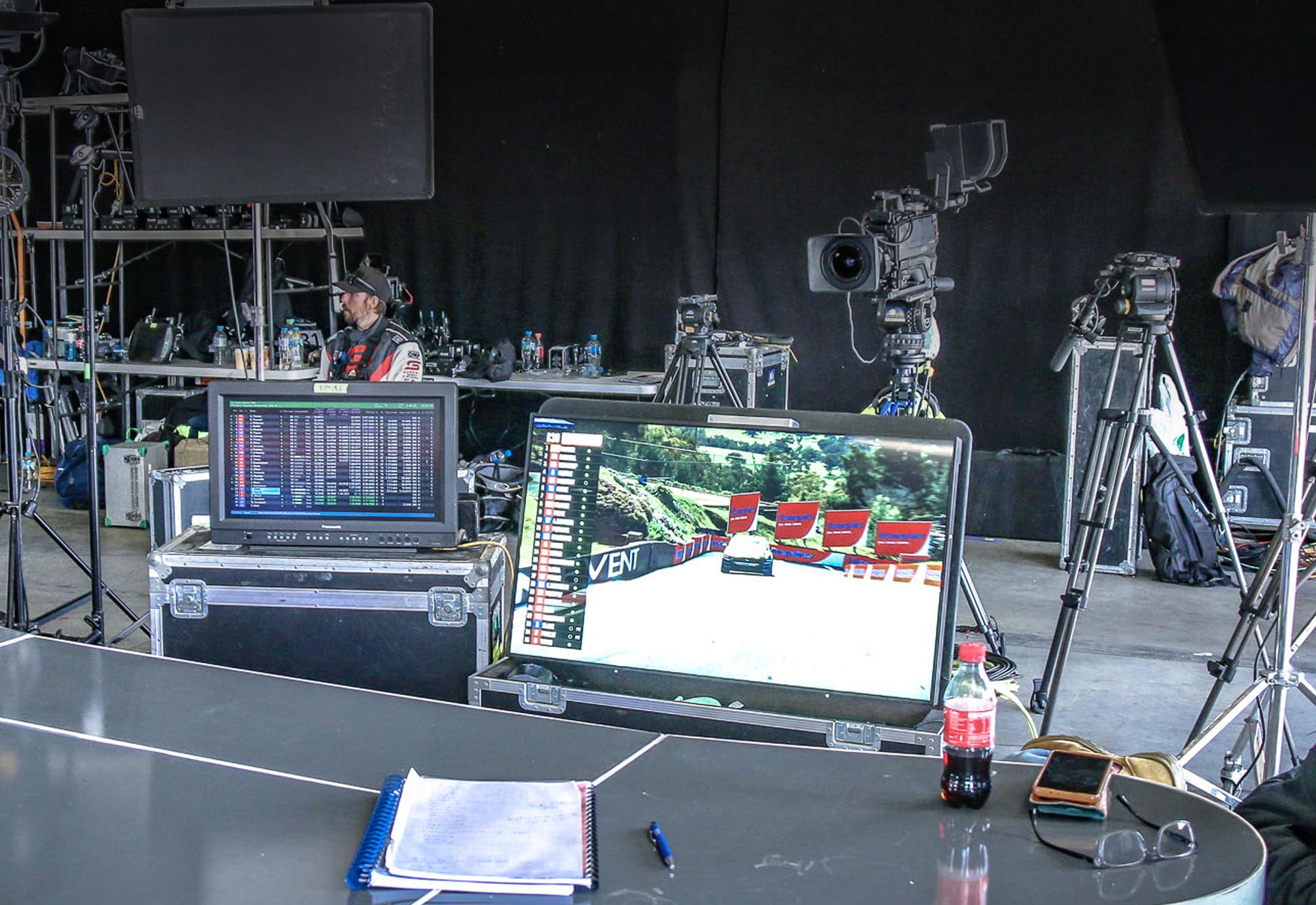INSIGHT: The changing face of Bathurst viewers

BACK IN 2014, when the world was a much simpler place, the only way you could watch the Bathurst 1000 was via one single, linear operating free-to-air TV channel.
Little did we know, as we all enjoyed the breathtaking, mad finish to the 2014 Great Race that in less than eight years a quantum shift would have occurred in the way racing fans consume the best race of the year – even if the audience size itself remains remarkably consistent.
The way Bathurst is consumed by TV audiences is the media landscape in a nutshell – rapidly changing, quickly evolving and at times quite difficult to keep up with.
Fortunately, TRT has spent a lot of time tracking the audiences who watch Bathurst each year and in that data we can paint a detailed picture of how that audience has rapidly changed their way of consumption.
Be warned: If this year is any indication, there’s massive change coming.
FREE TO AIR SHIFT
FOR THE first 51 years of the Bathurst 1000 the only way to watch the race on TV was via Free-to-air TV, mostly the Seven Network and their pioneering coverage.
From 1997 Channel 10 got in the act as well and for a time there were two 1000km races aired on TV each year.
However, Supercars’ landmark 2015 broadcast deal that included Subscription TV into the mix for the first time, alongside a return of Channel 10, changed the landscape completely.
As a reminder, it is worth at this point reflecting on the fact that the Bathurst 1000 has averaged 1.25 million viewers in the five capital cities – the standard TV ratings metric released to the media for years – across the last 16 years.
TRT has documented how the race is one of the most-viewed sporting events on the calendar in terms of an audience watching in such large numbers for such a sustained period – only test match cricket can beat it in that area.
And where the audiences for the major footy code Grand Finals can shift by up to one million viewers per year, Bathurst’s audience is consistently loyal.
Prior to 2015, 100% of that loyal audience watched on free-to-air TV.
Fox Sports’ introduction that year, however, changed things, with 244,000 people watching the race on the subscription broadcaster on its first attempt at covering the race.
Channel 10, who had taken over from Seven, drew 82% of the total audience.
While in the early days it was hard to judge how the acceptance of Foxtel would be, it was clear that many die-hard fans were making the switch to take advantage of the high-definition and ad-break free offering that for many, was worth paying for.
In 2016, Fox added almost 100,000 viewers to their audience, giving them 26% of the total audience, while 10 shred almost the same amount; yet all the while the total number remained much the same.
Things steadied slightly in 2017 – 30% were watching on Fox, up from 26% the previous year – before taking a larger jump the following year.
By 2019, just 61.5% of the total Bathurst audience of 1.297m that year were watching on Channel 10’s free to air channel.
2020, Channel 10’s last year, represented the lowest audience for the Bathurst 1000 in free-to-air history with just 669,000 watching on the network – almost exactly half of the 1,224,000 who had watched the 2014 race exclusively on Channel 7.
Some of this decline must be attributed to 10’s struggles at the time; the beleaguered network shredding viewers as it battled bankruptcy and a takeover from American giants, CBS.
And, in 2021, the free to air numbers did rise, Channel 7 drawing 747,000 that year and even more in 2022.
However the fact remained that as Foxtel’s product, marketing and coverage gained popularity, people did shift across. Those who could afford to pay for it, did so.
In five years, Foxtel – and therefore Subscription-based Television – went from having zero percent of the Bathurst audience to nearly 40% of it.
| YEAR | TOTAL AUDIENCE | FREE TO AIR (CHANNEL 10 / 7) | PAY TV (FOX SPORTS) |
|---|---|---|---|
| 2014 | 1,224,000 | 1,224,000 | NA |
| 2015 | 1,339,00 | 1,095,000 | 244,000 |
| 2016 | 1,339,00 | 997,000 | 342,000 |
| 2017 | 1,311,000 | 849,000 | 462,000 |
| 2018 | 1,132,000 | 745,000 | 387,000 |
| 2019 | 1,297,000 | 818,000 | 469,000 |
| 2020 | 1,093,000 | 669,000 | 347,000 |
| 2021 | 1,118,000 | 747,000 | 371,000 |
| 2022 | 1,289,000 | 774,000 | 346,000 |
STREAMING
ON DEMAND viewing remains the hot topic in the media world as streaming giants like Netflix, Amazon, Disney, Paramount, You Tube, Stan and others throw big dollars at bespoke content in a bid to draw subscribers.
As it is in the traditional media, sport remains one of the easiest ways to draw regularly large numbers of eyeballs to any given platform, which means that everyone has their cheque book out looking to secure live content for their respective platforms.
The year-round nature of sport means streamers are less likely to experience ‘churn’, when people subscribe to watch a given series or event, and then unsubscribe soon thereafter.
In Australia, the Nine Network have placed much of their Rugby Union content on Stan, not to mention their investment in motorsport via ARG’s Speed Series. CBS, via their Paramount + platform, has most of the local broadcast rights to Soccer, including the A-League and Socceroos fixtures.
Optus were an early player when they pinched English Premier League football rights away from Foxtel, while the ability of the Seven Network to stream AFL games via their 7plus application was a fundamental component of the AFL’s recent record TV rights deal.
Further afield, Amazon has made a significant play at the National Football League – the mecca and most expensive of global sports rights – including grabbing legendary broadcaster Al Michaels to head up their exclusive Thursday night coverage on Prime Video.

In Australia, however, the Fox Sports-owned Kayo remains the place to be when it comes to live sport and the growth of that platform in four short years has been nothing short of enormous – going from zero to more than 1.2 million subscribers in that time.
That is reflected in the audiences they draw, with the Foxtel Group’s streaming numbers exploding in the last two years.
In 2019, Kayo’s first full year, Foxtel announced that an additional 33,000 watched the Bathurst 1000 via their streaming platforms (that includes Foxtel Go and Kayo, but for simplicities sake we’ll just reference the latter here) on top of the 469,000 who watched via Fox Sports.
That number more than doubled the following year to 77,000 and climbed to 111,000 in 2021.
This year it went even further: Foxtel confirming 178,000 watched via their streaming platforms.
It meant that for the first time in history more than 40% of the total Bathurst audience were watching via either Fox Sports or their streaming alternatives.
The streaming rush doesn’t stop there, however, because the Seven Network are among the most proactive of the ‘traditional’ networks when it comes to promoting their own digital platforms alongside their linear offerings.
The network confirmed that 94,000 streamed the race via 7plus this year, meaning the total streaming audience wasn’t 178,000 – it was 272,000.
If ever there was an example to cite the truly meteoric rise of streaming in the way the world is consuming its media – and in particular live sport – it is this: In four years, the streaming audience for one of Australia’s largest sporting events has increased by more than 720%: climbing from 2.5% of the total audience in 2019 to nearly 21% of it in 2022.
That’s a lot.
| YEAR | FTA (CH 10/7) | PAY TV (FOX SPORTS) | STREAMING (KAYO/7PLUS) |
|---|---|---|---|
| 2014 | 100% | 0% | 0% |
| 2015 | 82% | 18% | 0% |
| 2016 | 74% | 26% | 0% |
| 2017 | 70% | 30% | 0% |
| 2018 | 66% | 34% | 0% |
| 2019 | 61.5% | 36% | 2.5% |
| 2020 | 62% | 31% | 7% |
| 2021 | 61% | 30% | 9% |
| 2022 | 53% | 26% | 21% |
WHAT DO WE LEARN?
BECAUSE of its both enormous and utterly reliable TV audience size, the Bathurst 1000 is the perfect example of the current upheaval in the broadcasting landscape.
It showcases the rapid shift away from free-to-air TV being the be all and end all of how to consume sport, the hard-core audiences willing to embrace a paid product and, more recently, a shift to digital and on-demand content via an application, rather than an antenna, dish or cable.
Bathurst is also special in that it is sacrosanct in the eyes of the Government: due to the anti-syphoning regulations it is one of only a few motorsport events (including the Australian Grand Prix and Australian MotoGP race) that must by law be shown on terrestrial TV.
Beyond those few lucky events that must be shown on free-to-air, a look to Formula One’s Australian audiences suggest the shift to new media platforms is even more aggressive than Bathurst’s numbers indicate.
As documented by TRT at the time, Fox Sports’ own numbers indicated that of their total audience of 467,000 watching Daniel Ricciardo win the Italian Grand Prix last year, 337,000 of them were streaming it.
While Fox rarely release their streaming numbers (much to our frustration) our research indicates that the streaming audience regularly doubles the average number of eyeballs watching a regular Supercars event broadcast only on the Pay TV provider.
As for Bathurst? Well, the Great Race remains a remarkable draw for local audiences, in remarkably consistent numbers each year and regardless of how they consume it.
However, in just eight years the way those audiences do consume the race has shifted remarkably, more in the last two years than ever before.
While the numbers indicate people will continue to watch the 1000 any way they can, the next few years will be a fascinating period that will likely dictate how we all consume the best race of them all for years to come.







